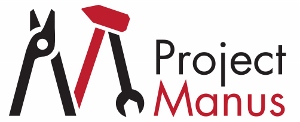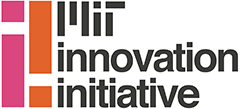
Types of posters at ISAM
There are two types of posters at ISAM, please see the appropriate section below for guidance on your specific type:
- Student posters (show us the cools tuff you've made!)
- Technical posters (that accompany a paper or invited talk)
Student posters
If you are a student sharing cool stuff you have made, see the ISAM Call for Student Posters. If you are presenting a poster to compliment your talk, see the guidelines below.
Technical posters
Suggestions for Effective Poster Presentations at the ISAM
The poster should be centered around two or three key points supported by the title, figures, and text.
The poster should be able to “stand alone.” That is, it should be understandable even when you are not present to explain, discuss, and answer questions. This quality is highly desirable since you may not be present the entire time posters are on display, and when you are engaged in discussion with one person, others may want to study the poster without interrupting an ongoing dialogue.
To meet the "stand alone" criteria, it is suggested that the poster include the following elements, as appropriate:
- Background
- Objective, purpose, or goal Hypotheses
- Methodology
- Results (including data, figures, or tables)
- Discussion
- Implications and future research
- References and Acknowledgments
Design and layout
- A board approximately 8 ft. wide x 4 ft. high will be provided for the display of your poster, and another poster, that will share this board. You will therefore have approxamatly a 4 ft. x 4 ft. area within which to display your poster. Supplies will be available for attaching the poster to the display board. Each board will be marked with the poster numbers.
- Typically posters are arranged from left to right and top to bottom. Numbering sections or placing arrows between sections can help guide the viewer through the poster.
- Centered at the top of the poster, include a section with the abstract number, paper title, and author names and affiliations. An institutional logo may be added.
- Keep the design relatively simple and uncluttered. Avoid glossy paper.
Lettering and text
- Font size for the title should be large (e.g., 70-point font but pick what you think best)
- Font size for the main elements should be large enough to facilitate readability from ~2 yards away (e.g., 32 point font). The font size for other elements, such as references, may be smaller (e.g., 20 - 24 point font).
- Sans serif fonts (e.g., Arial, Calibri, Helvetica) are much easier to read than serif fonts (e.g., Times New Roman).
- Text should be brief and presented in a bullet-point list as much as possible. Long paragraphs are difficult to read in a poster presentation setting.
Visuals
- Graphs, photographs, and schematics should be large enough to see from 2 yards (e.g., 8 x 10 inches).
- Figure captions or bulleted annotation of major findings next to figures are essential. To ensure that all visual elements are "stand alone," axes should be labeled and all symbols should be explained.
- Tables should be used sparingly and presented in a simplified format.
Presentation
- Prepare a brief oral summary of your poster and short answers to likely questions in advance.
- The presentation should cover the key points of the poster so that the audience can understand the main findings. Further details of the work should be left for discussion after the initial poster presentation.
- It is recommended that authors practice their poster presentation in front of colleagues before the meeting. Authors should request feedback about the oral presentation as well as poster content and layout.
Other suggestions
You may wish to prepare reduced-size copies of the poster (e.g., 8 1/2 x 11 sheets) to distribute to interested audience members.
Send email to us at isam2016@mit.edu with the title of your poster let us know that you are brining a poster to present.






